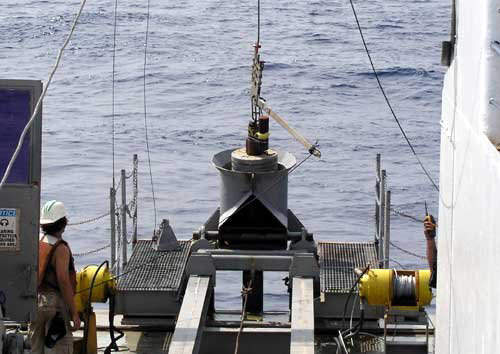The Neptune Field is located in the Gulf of Mexico in Atwater blocks 573, 574, 575, 617, and 618, approximately 120 miles from the coast of Louisiana in water depths ranging from 4,200ft to 6,500ft.
Recoverable reserves at the Neptune field are estimated to range between 100 and 150 million barrels of oil equivalent.
BHP Billiton is designated operator with a 35% share, its partners being Marathon Oil (30%), Woodside Energy (20%) and Repsol subsidiary Maxus Exploration (15%).
Neptune drilling
Neptune was discovered in 1995 and marked the first discovery in the Western Atwater Foldbelt. An initial appraisal well (Neptune-2) was drilled in 1997. BHP Billiton took over operatorship in 2002.
In order to delineate the field, the operator subsequently drilled four more appraisal wells with two sidetracks. These included Neptune-3, drilled in 2002, which encountered 120ft of net pay; Neptune-5, drilled in 2003, which found 500ft of net pay; and Neptune-7, drilled in 2004, which intersected 114ft of net pay.
Drilling and completion operations were executed using the ultra-deepwater Development Driller 1 semi-submersible drilling rig. In 2004, BHP Billiton signed a two-year contract with the drilling contractor GlobalSantaFe for the use of this rig in the GoM.
Field development
The Neptune field has been developed by a standalone Tension Leg Platform (TLP) located in approximately 4,250ft of water. The TLP design is similar to the Chevron / BHP Billiton Typhoon platform in Green Canyon blocks 237 and 238.
This single-column TLP is of an Atlantia Seastar design. Field development includes six subsea wells tied back to the TLP; the mini-platform does not have facilities for dry trees.
Further development wells are expected to be drilled after interpretation of new seismic data, which will be obtained in the second half of 2008.
The Neptune facility has a design capacity to produce up to 50,000 barrels of oil and 50 million cubic feet of gas a day. Produced water is estimated at 30,000 barrels a day. There are permanent quarters for 26 people and temporary quarters for a further 24. The helideck is able to accommodate an S-92 helicopter.
The design has three deck levels. The deck has a length of 121ft (36.3m) by 110ft (33m). This is supported by a mono-column steel hull, weighing 5,900t, with a column height of 128ft (39m) and a diameter of 79ft (23m). There are three pontoons.
It is linked to the seabed by six tendons (three by two). These have a 36in (914mm) diameter and a 1.36in (34mm) wall thickness. The tendon segments are in lengths of 289ft (88m) and were supplied by Europipe. They are connected by Vetco connectors.
The tendons are anchored by six piles with a diameter of 96in and a 414ft pile length.
The design of the hull and topsides was carried out by SBM Atlantia, which procured and project managed the project. The topsides were fabricated by Gulf Island fabricators in Houma, Louisiana, while the hull was manufactured by Signal International in Orange, Texas.
They were assembled by Heerema Marine Contractors, which also installed the tendons and the platform using the Thialf.
Gross costs for the development were originally estimated at approximately $850m but the total cost is now widely reported to be $1.2bn.
Oil and gas export
The oil and gas is exported by the Caesar and Cleopatra trunk lines, in which BHP Billiton holds a 25% and 22% interest respectively.
The new laterals were installed, and are owned and operated by Enbridge Offshore (Gas Gathering) LLC. The oil export line is 20in-diameter and runs 23 miles, while the gas line is a 12.7in-diameter, also with a length of 23 miles.
Production
Production was due to have started by the end of December 2008 but was first deferred to the first quarter.
Then, in March 2008, BHP Billiton said that during a routine inspection immediately prior to start-up of the TLP it had discovered ‘structural anomalies’ in its hull, delaying start-up further.
Production finally began in July 2008.





